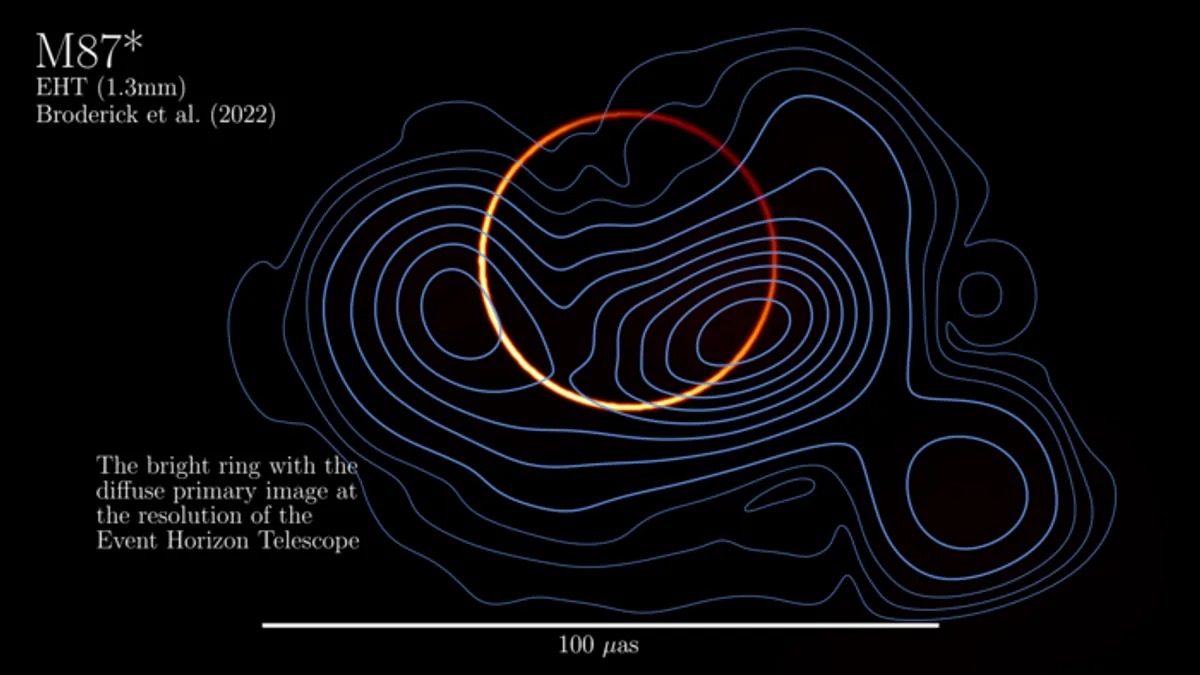The gravity of a supermassive black hole is so strong that photons are forced to make several revolutions at its event horizon before escaping. This effect is known as the photon ring. After observing M87*, the researchers assumed that a weak photon ring was hiding inside the historical image of a black hole. Now the team has proven its presence using Event Horizon Telescope data.

As reported in the Astrophysical Journal, astronomers have applied a new and sophisticated algorithm to obtain a photon ring imprint. In addition, the team also identified a noticeable relativistic jet imprint extending tens of thousands of light-years from this supermassive black hole.
The breakthrough was not easy. In 2017, Event Horizon Telescope (EHT) used observatories around the globe simultaneously, turning them into the only virtual telescope the size of the Earth. This allowed astronomers to see complex radiation around the supermassive black hole in the galaxy M87 and Sagittarius A*, which is located in the center of the Milky Way. Radiation from the closest environment is much brighter than the photon ring, so it is incredibly difficult to notice. However, EHT was developed with an emphasis on computer analysis of complex data, which allowed the team to isolate the photon ring from the initial observations.

“The approach we applied involved using our theoretical understanding of what these black holes look like to create an individual model for EHT. As a result, we were able to determine the fundamental sign of gravity around a black hole. It’s like turning on a spotlight to see fireflies,” said Dominique Pesce, a team member from the Center for Astrophysics at Harvard and Smithsonian Institutions.
The work is based on the original EHT observations for 2017.Since then, several surveillance campaigns have been conducted for M87*, Sagittarius A* and many other interesting objects. Given how much can be learned from the original observations, the new material will provide even more insight into some of the most extreme objects in space.
Earlier we reported how astronomers doubted the veracity of the first photo of a black hole.
Follow us on Twitter to get the most interesting space news in time
https://twitter.com/ust_magazine

